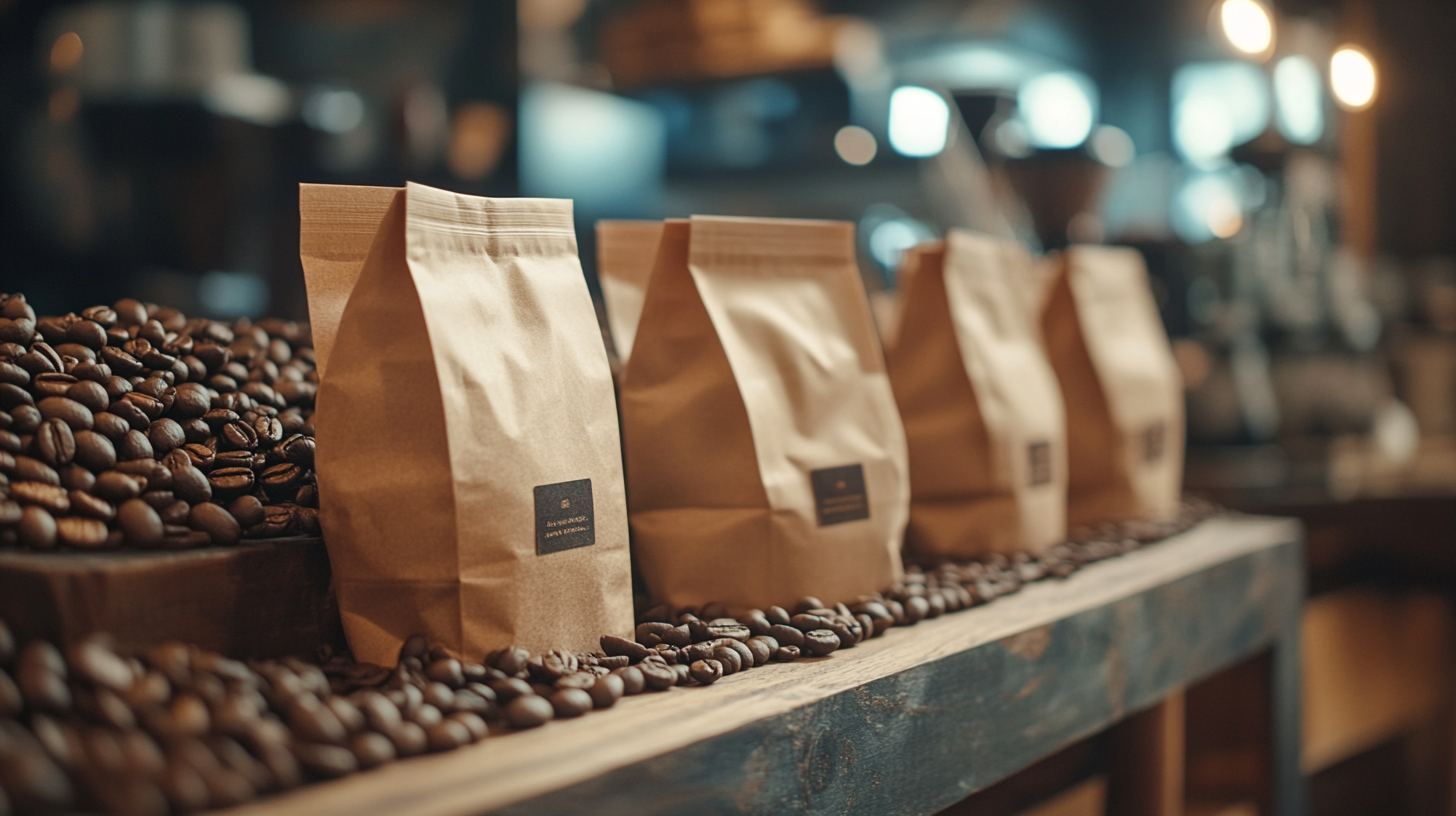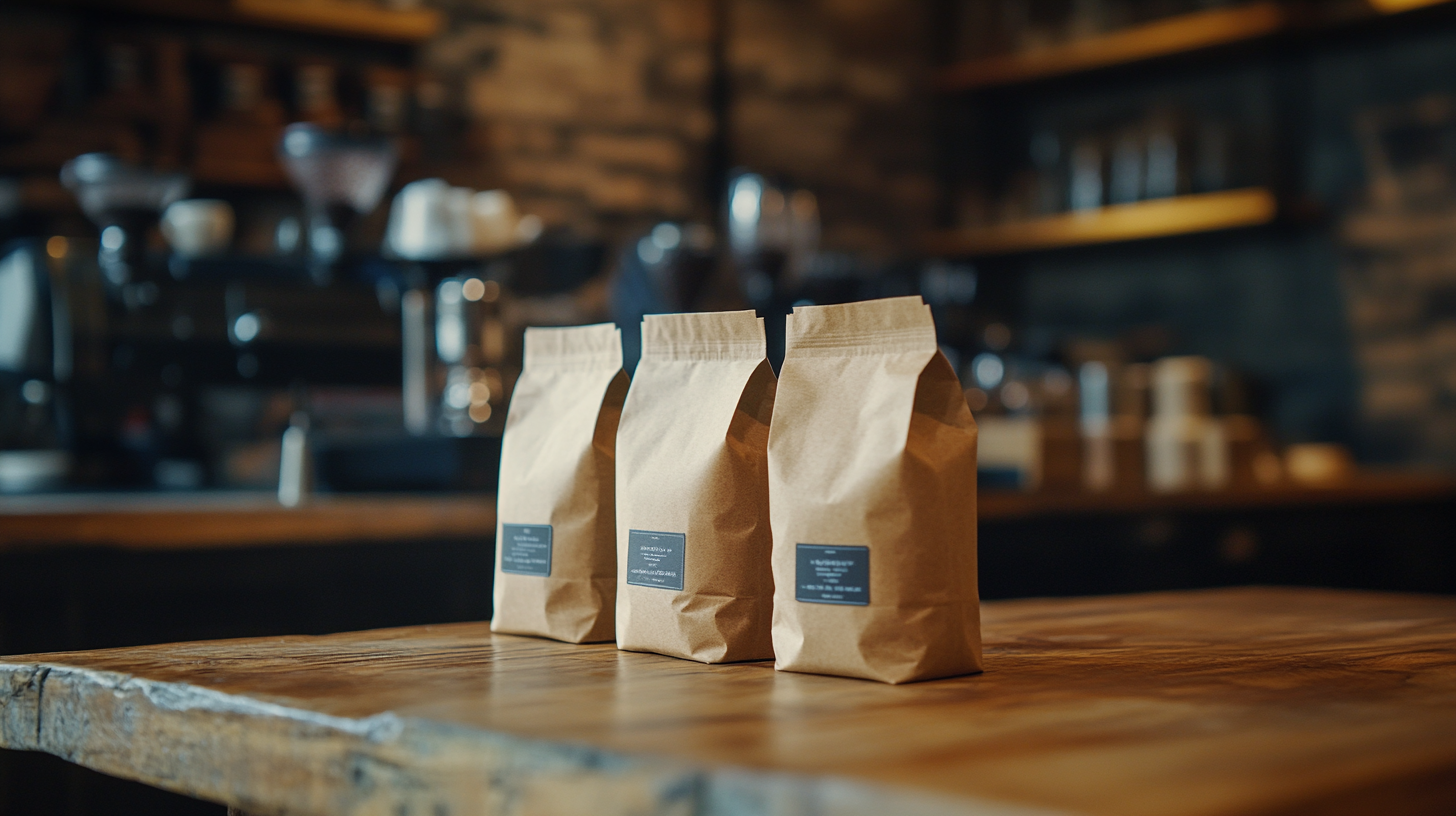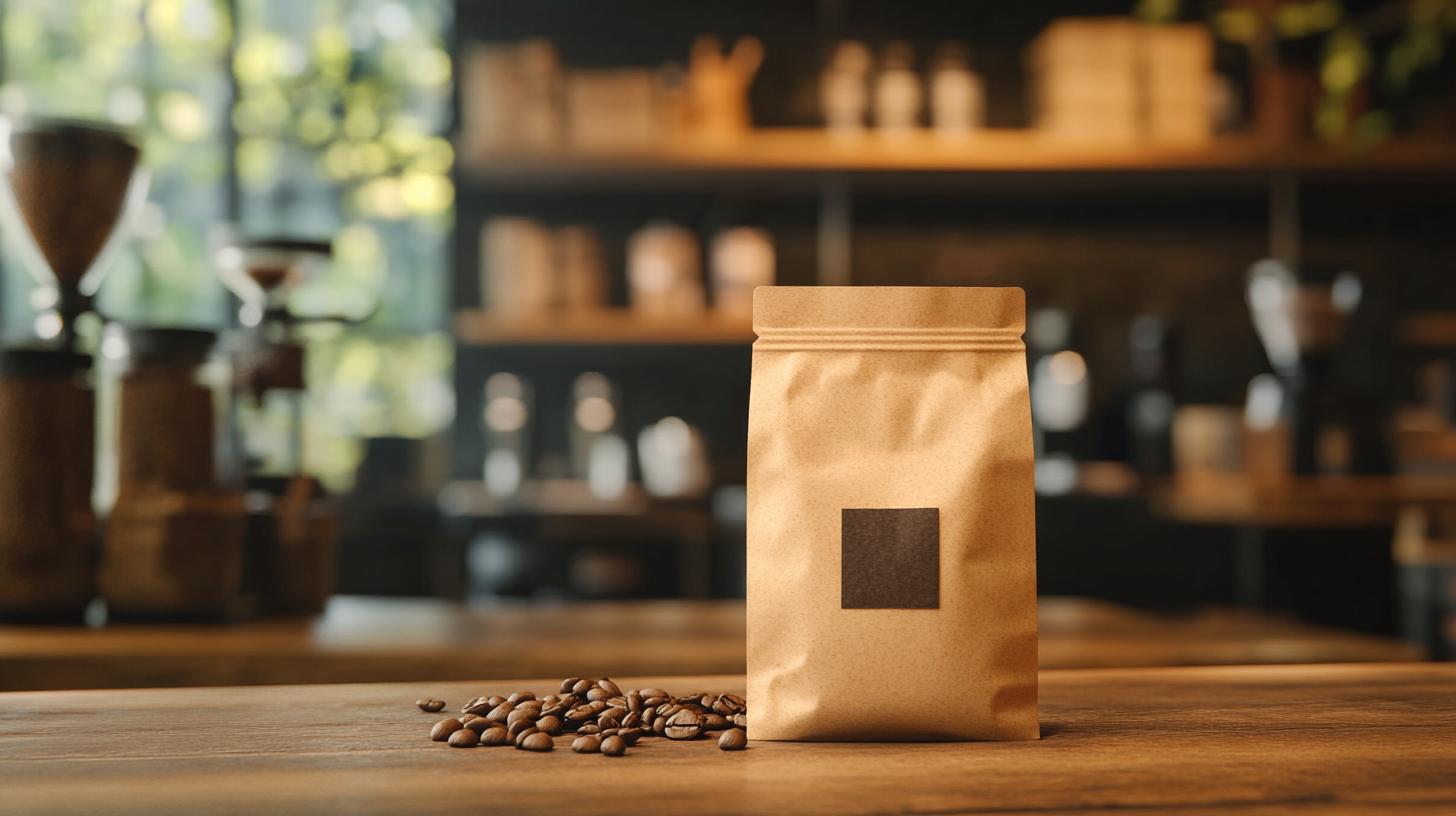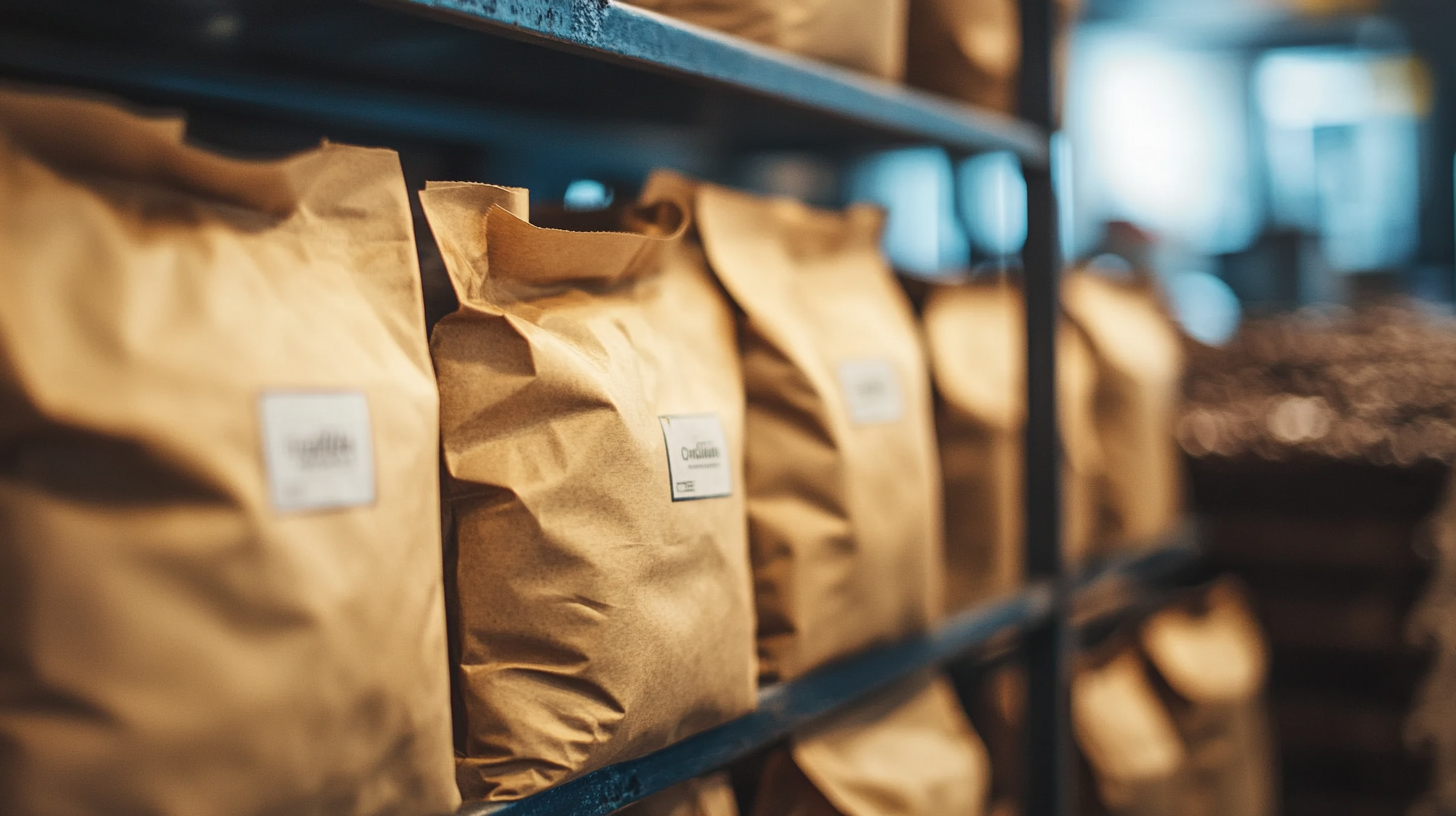- Phone:+86 15218629499
- Phone: +86 15766990063
- E-mail: Yzprinting01@163.com
The coffee industry has witnessed a significant transformation in recent years, not only in terms of product offerings but also in packaging solutions that enhance consumer experience and product longevity. According to a report by the National Coffee Association, over 62% of Americans drink coffee daily, indicating a robust market demand that necessitates innovative approaches to packaging. As sustainability and convenience become increasingly critical for consumers, the importance of effective Coffee Bag Packaging has risen sharply, driving industry players to seek innovative solutions that cater to these evolving preferences.
Innovative Coffee Bag Packaging is crucial in maintaining the freshness and quality of coffee, with studies showing that proper packaging can extend shelf life by up to 50%. Moreover, a market research report by Grand View Research highlights that the global coffee packaging market is projected to reach USD 4.17 billion by 2025, growing at a CAGR of 4.5%. This trend underscores the need for brands to prioritize packaging innovations that not only enhance the aesthetic appeal but also ensure product integrity. As we delve deeper into this topic, we will explore the various advantages offered by innovative coffee bag packaging solutions and their impact on consumer satisfaction and brand loyalty.

The evolution of coffee packaging has undergone significant transformations, moving from traditional methods to innovative solutions that cater to both consumer preferences and sustainability concerns. Historically, coffee was sold in simple kraft paper bags or metal tins that offered limited protection against external factors like moisture and light. According to the Specialty Coffee Association, an estimated 60% of coffee quality deterioration occurs during the packaging phase. This alarming statistic emphasizes the need for advanced packaging technologies that ensure the freshness and flavor integrity of coffee. In recent years, the market has witnessed a shift towards high-barrier packaging materials that combine functionality with aesthetic appeal. Innovations such as vacuum-sealed bags and resealable pouches have become increasingly popular, allowing for extended shelf life and convenience. A report by Grand View Research indicates that the global coffee packaging market is expected to reach $xx billion by 2025, driven by the rising demand for premium coffee products. Enhanced packaging features, such as one-way valves that allow gases to escape while preventing air from entering, have also gained traction, providing an optimal environment for coffee storage. Furthermore, sustainability has become a pivotal focus in the coffee industry. As consumer awareness regarding environmental impacts rises, brands are pivoting to recyclable and compostable packaging options. Studies reveal that around 70% of coffee drinkers prefer sustainable packaging, underscoring the importance for brands to adapt. Innovations such as biodegradable bags made from plant-based materials not only resonate with eco-conscious consumers but also align with regulatory pressures on reducing plastic waste. As the coffee packaging landscape continues to evolve, these innovations are set to redefine the standards for quality and sustainability in the industry.

The coffee industry has witnessed a remarkable shift in packaging practices, particularly with a focus on sustainability. Eco-friendly innovations in coffee bag packaging are not just trends; they showcase a commitment to reducing environmental impact. Traditional coffee packaging often relies on materials that contribute to pollution and wastage, but modern solutions prioritize biodegradability and recyclability. Innovative designs utilize plant-based plastics and compostable materials, catering to environmentally conscious consumers.
One of the standout advancements in sustainable coffee packaging is the use of biodegradable films derived from renewable resources. These films break down naturally, reducing landfill waste and the overall carbon footprint of coffee production. Additionally, companies are exploring recyclable options that allow consumers to participate in the recycling process actively. By providing clear instructions on how to recycle coffee bags, brands empower their customers to make eco-friendly choices, fostering a community focused on sustainability.
Moreover, innovative packaging technologies, like vacuum sealing and zip-lock features, have enhanced the freshness of coffee while minimizing waste. These solutions not only preserve the quality of the coffee but also contribute to a more sustainable life cycle. As customer preferences shift towards sustainability, coffee brands that prioritize eco-friendly packaging can differentiate themselves in a competitive market, cultivating brand loyalty among environmentally conscious consumers.

Innovative sealing techniques have become a game-changer in the coffee packaging industry, particularly when it comes to maintaining freshness. Traditional methods often fall short in preventing oxygen and moisture from degrading the quality of coffee. However, with the advent of advanced packaging solutions, companies can now offer products that preserve the aroma and flavor of coffee beans for longer periods. This not only enhances the overall drinking experience but also helps reduce waste, as consumers can enjoy their coffee at its peak freshness.
One notable advancement is the use of one-way valves, which allow gases released during the roasting process to escape while preventing air from entering the bag. This clever design minimizes oxidation, ensuring that the coffee remains flavorful over time. Moreover, vacuum-sealed packaging further extends the lifespan of coffee by removing air entirely, providing an airtight environment that locks in essential oils and compounds. These innovative techniques not only cater to the preferences of coffee enthusiasts but also bring a sense of quality assurance to consumers.
Additionally, the use of eco-friendly materials in conjunction with these sealing technologies offers a sustainable approach to coffee packaging. Manufacturers are increasingly turning to biodegradable and recyclable options, demonstrating that they value both product quality and environmental responsibility. By marrying innovation with sustainability, coffee brands can not only enhance freshness but also create a positive impact on the planet, appealing to conscientious consumers seeking both premium quality and ethical sourcing.

In today's fast-paced world, consumer convenience is a crucial factor influencing purchasing decisions, particularly in the coffee industry. Modern packaging solutions for coffee bags have evolved to meet the multifaceted needs of customers. Innovative features such as resealable zippers and single-serve pods provide users with flexibility and ease, allowing them to enjoy their favorite brews without the hassle of messy spills. This kind of design not only promotes freshness but also accommodates busy lifestyles, making it easier for coffee lovers to indulge their cravings anytime.
Additionally, the aesthetic appeal of contemporary coffee bag packaging cannot be overlooked. Striking designs and vibrant colors attract consumers on the shelves, while clear labeling and informative graphics enhance the shopping experience. With a greater emphasis on sustainability, many brands are adopting eco-friendly materials, catering to environmentally conscious buyers who prioritize responsible consumption. This holistic approach to packaging not only boosts sales but fosters brand loyalty among consumers who appreciate companies that align with their values.
Ultimately, modern coffee bag packaging is a reflection of the evolving preferences and lifestyle demands of today's customers. By integrating convenience and sustainability, brands are transforming how coffee is experienced, ensuring that consumers can enjoy their favorite drink with minimal effort and maximum satisfaction. As the industry continues to innovate, the focus on meeting customer needs will undoubtedly shape the future of coffee consumption.
In the competitive world of coffee retail, packaging plays a pivotal role in influencing consumer behavior. Aesthetic appeal is not merely about visual attraction; it significantly impacts purchase decisions. Research indicates that 70% of consumers judge a product by its packaging. When it comes to coffee, this means that vibrant colors, intriguing designs, and innovative materials can set brands apart on crowded shelves. A well-executed packaging design not only draws attention but also communicates the brand's identity and values.
Luxury packaging designer and brand strategist Khushboo Goyal emphasizes that coffee brands can dramatically increase their market presence through thoughtful design strategies. By integrating elements that reflect sustainability—such as biodegradable materials or minimalist designs—brands can resonate with environmentally-conscious consumers. Studies have shown that packaging innovation can lead to a 30% increase in sales, highlighting the profound effects a well-designed package can have on consumer perception and market performance.
Furthermore, creating a sensory experience through packaging can enhance consumer engagement. Packaging that not only looks appealing but also feels unique—like textured surfaces or resealable closures—can create a lasting impression. As consumers interact with coffee brands on social media, aesthetically pleasing packaging also encourages sharing and engagement online, further amplifying the brand's reach. With the right approach, packaging becomes more than just a protective layer; it transforms into a crucial marketing tool that drives sales and builds brand loyalty in the highly competitive coffee market.
